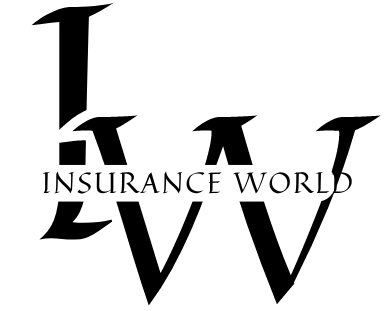Introduction:
Flood insurance is a specialized form of insurance coverage designed to protect property owners, renters, and businesses against the financial losses and damages caused by flooding. While standard homeowners, renters, and commercial property insurance policies typically do not cover flood damage, flood insurance provides essential coverage for properties located in flood-prone areas. In this comprehensive guide, we’ll explore everything you need to know about flood insurance, from understanding its importance to navigating coverage options and risk management strategies to safeguard your property against the devastating impacts of floods.
- Understanding Flood Insurance:
- Flood insurance is a type of insurance coverage that provides financial protection for property owners, renters, and businesses against losses or damages resulting from flooding, including overflow of inland or tidal waters, heavy rainfall, storm surges, and flash floods.
- It covers repair or replacement costs for structural damage to buildings, as well as damage to personal property, furnishings, appliances, and other belongings caused by flood-related events.
- Flood insurance policies are typically offered through the National Flood Insurance Program (NFIP) administered by the Federal Emergency Management Agency (FEMA), as well as private insurance companies that offer supplemental flood insurance coverage.
- Importance of Flood Insurance:
- Financial Protection: Flood insurance provides essential financial protection for property owners, renters, and businesses against the potentially catastrophic costs of repairing or rebuilding property damaged by floods.
- Coverage Gap: Standard homeowners, renters, and commercial property insurance policies typically exclude or limit coverage for flood damage, leaving property owners vulnerable to significant financial losses without separate flood insurance coverage.
- Regulatory Requirements: Properties located in high-risk flood zones designated by FEMA may be required to carry flood insurance as a condition of obtaining a mortgage loan or complying with regulatory requirements imposed by lenders or local authorities.
- Peace of Mind: Flood insurance offers peace of mind and security for property owners, renters, and businesses, knowing that they are financially protected and prepared to recover from the aftermath of a flood event.
- Types of Flood Insurance Coverage: a. Building Coverage:
- Building coverage provides protection for the structural components of the insured property, including the building’s foundation, walls, roof, floors, and attached structures, against flood damage.It covers repair or replacement costs for structural damage caused by flooding, including damage to the foundation, walls, floors, ceilings, electrical systems, plumbing, heating, and air conditioning systems.
- Contents coverage provides protection for personal belongings, furnishings, appliances, electronics, clothing, and other contents inside the insured property against flood damage.It covers repair or replacement costs for personal property damaged or destroyed by flooding, including furniture, electronics, appliances, clothing, and other belongings.
- Basement coverage provides additional protection for finished or unfinished basements, including structural components, furnishings, appliances, and personal belongings located in the basement area.It covers repair or replacement costs for structural damage to basement walls, floors, ceilings, and contents caused by flooding, as well as damage to utilities, such as furnaces, water heaters, and electrical panels.
- ICC coverage provides reimbursement for additional expenses incurred to comply with local building code requirements or floodplain management regulations when repairing or rebuilding a flood-damaged property.
- It covers costs associated with elevation, relocation, floodproofing, or other mitigation measures necessary to meet regulatory requirements or reduce future flood risks.
- Factors Affecting Flood Insurance Premiums:
- Flood Zone: The flood zone classification assigned to the property by FEMA, based on its risk of flooding, can impact flood insurance premiums, with higher rates for properties located in high-risk flood zones designated as Special Flood Hazard Areas (SFHAs).
- Elevation: The elevation of the property relative to the base flood elevation (BFE) or floodplain can affect flood insurance premiums, with higher rates for properties situated below the BFE or in low-lying areas prone to flooding.
- Building Characteristics: The construction materials, design features, age, condition, and elevation of the building can influence flood insurance premiums, with higher rates for properties with higher flood risk profiles or susceptibility to flood damage.
- Coverage Limits and Deductibles: The coverage limits selected by the policyholder, as well as the deductible amount chosen for the policy, can affect flood insurance premiums, with higher coverage limits and lower deductibles resulting in higher premiums.
- Selecting the Right Flood Insurance Coverage:
- Assess Flood Risk: Evaluate the specific flood risks and exposures associated with the property, including factors such as flood zone classification, elevation, proximity to water bodies, and historical flood data, to determine the appropriate coverage needs.
- Review Policy Options: Research and compare flood insurance policies from the NFIP and private insurance companies, reviewing coverage options, premiums, deductibles, and policy terms to find the best fit for your property.
- Customize Coverage: Tailor your flood insurance coverage to meet your unique needs and risk tolerance, considering factors such as building value, contents value, basement exposure, and desired coverage limits.
- Consider Additional Endorsements: Explore additional endorsements or riders offered by insurance companies to enhance your flood insurance coverage, such as excess flood coverage, replacement cost coverage, or loss of use coverage.
- Risk Management Strategies for Flood Preparedness:
- Mitigation Measures: Implement flood mitigation measures to reduce the risk of flood damage to the property, including elevation, floodproofing, drainage improvements, landscaping changes, and retrofitting.
- Emergency Preparedness Planning: Develop and implement an emergency preparedness plan for flood events, including evacuation routes, emergency supplies, communication protocols, and family or staff training.
- Floodproofing and Retrofitting: Retrofit the property with floodproofing measures, such as installing flood barriers, flood vents, sump pumps, backflow prevention devices, and waterproofing sealants, to minimize flood damage.
- Community Floodplain Management: Participate in community floodplain management programs, zoning ordinances, building codes, and land use regulations to mitigate flood risks and protect properties within flood-prone areas.
- Conclusion: Flood insurance is a critical component of disaster preparedness and financial protection for property owners, renters, and businesses located in flood-prone areas. By understanding the importance of flood insurance, selecting the right coverage options, and implementing effective risk management strategies, property stakeholders can safeguard their properties, belongings, and financial security against the devastating impacts of floods. With comprehensive flood insurance coverage in place, individuals and businesses can face flood events with confidence and resilience, knowing that they are financially protected and prepared to recover from the aftermath of a flood.

